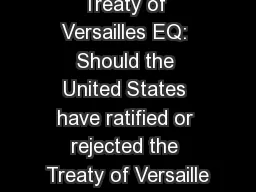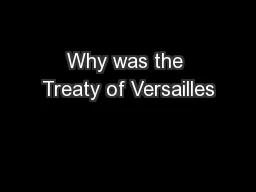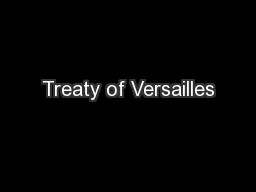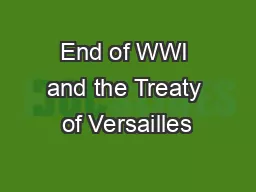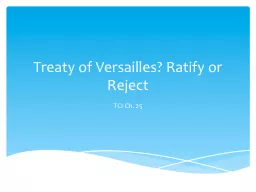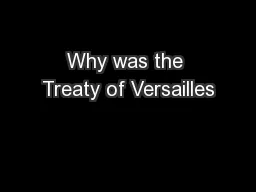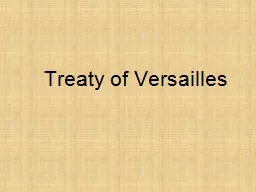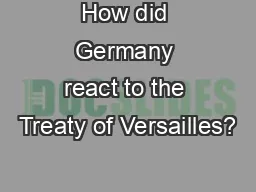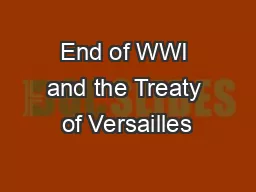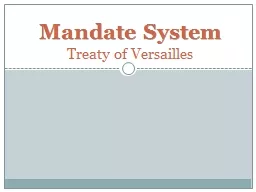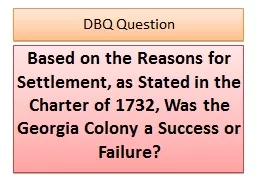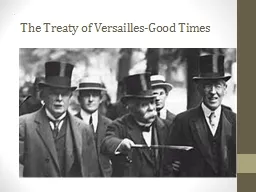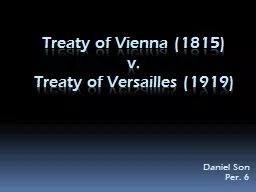PPT-Treaty of Versailles EQ: Should the United States have ratified or rejected the Treaty
Author : sherrill-nordquist | Published Date : 2018-03-21
How do you feel about President Wilson traveling to the peace conference in France What hopes do you have What fears concern you Imagine that it is 1919 You are
Presentation Embed Code
Download Presentation
Download Presentation The PPT/PDF document "Treaty of Versailles EQ: Should the Unit..." is the property of its rightful owner. Permission is granted to download and print the materials on this website for personal, non-commercial use only, and to display it on your personal computer provided you do not modify the materials and that you retain all copyright notices contained in the materials. By downloading content from our website, you accept the terms of this agreement.
Treaty of Versailles EQ: Should the United States have ratified or rejected the Treaty: Transcript
Download Rules Of Document
"Treaty of Versailles EQ: Should the United States have ratified or rejected the Treaty"The content belongs to its owner. You may download and print it for personal use, without modification, and keep all copyright notices. By downloading, you agree to these terms.
Related Documents

